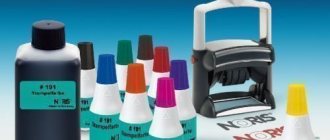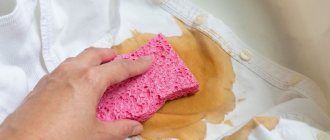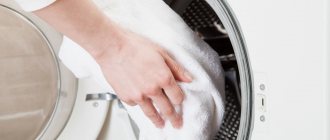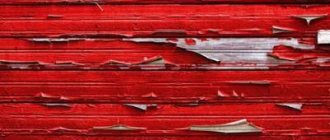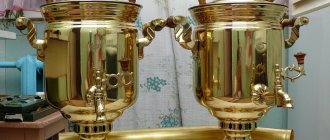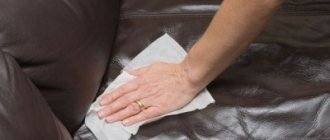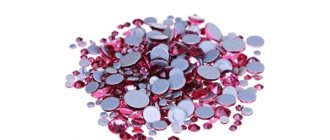The most common oral disease is stomatitis. To treat this disease, many doctors recommend blue to the patient. This is not the product that our grandmothers and mothers added to white paint when whitewashing ceilings. We are talking about a strong antiseptic that can neutralize pathogenic foci of stomatitis.
And so you bought beautiful things in the online clothing store for women with the taste of Alfasale, but accidentally stained them with the ill-fated blue. What to do?
This medication has a distinct blue color. And if it accidentally gets on your clothes, a bright spot appears, which can ruin the overall appearance of the product. At the same time, you shouldn’t be too upset, since using ordinary improvised means you can easily remove any contamination.
An excellent remedy in the fight against bright spots is hydrogen peroxide. It is recommended to use it only for processing light-colored items. Peroxide has a bleaching effect, which can cause even more damage to dark-colored items.
The liquid from the bottle is mixed with water in a 1:1 ratio. The item is placed in the resulting solution and left for approximately 30 minutes. Next, the clothes are washed in cold water. If traces of bluing remain, the procedure must be repeated, increasing the dose of peroxide.
What to do if white clothes are dyed during washing: ways to correct an unpleasant situation
An unpleasant surprise is the staining of white items after washing. Most often this happens because colored clothes were accidentally loaded into the washing machine drum.
You should not despair, as there are many ways to regain lost whiteness.
What to do if white clothes are dyed during washing, how to restore the color, how to bleach and save things? Details are in the article.
How to remove faded stains with home remedies, and what to do to prevent them from fading in the future?
Reading time: 3 minutes
Not all housewives know what to do if a new expensive item fades during washing. Of course, this is a rather serious problem, and it will be difficult to remove such stains, but it’s still worth a try.
And we will tell you about the most effective ways to get rid of faded stains.
The content of the article:
First aid
For the whitening procedure to be effective, you need to start it immediately. Waiting for the item to dry is not recommended, as this will complicate the task.
Here's what you need to do first:
- Find the “culprit” of the incident. The dyed item must be removed.
- Wash the faded linen again using powder.
- White linen should be washed in hot water (the maximum allowable value for a particular item).
- Use oxygen bleach to wash whites.
Under no circumstances should you iron faded fabric! This will lead to the “sealing” of the pigment in its fibers. It will be impossible to remove the paint.
How to Prevent Powder Stains on White or Colored Fabrics
There are a number of simple rules, the observance of which will help prevent the occurrence of faded stains. When loading the machine, do not fill the drum to the top with dirty laundry.
It is important to leave a little free space so that things can be caressed well
Liquid powder is always easier to wash off; there are a large number of gels and solutions suitable for machine washing on sale.
Experts advise observing the dosage of the cleaning agent and choosing its composition taking into account the type of fabric being washed.
Another important circumstance: if there is no limit on the washing temperature, you need to choose modes above 30 degrees. Only in hot water can the powder dissolve completely
How to restore whiteness to laundry at home?
You can restore lost whiteness using folk remedies. If they are powerless, then you should use professional bleaches.
White things shed differently. Sometimes colored stains or spots appear on them, and sometimes they are completely painted in gray, pink or another shade.
How to whiten with folk remedies?
White items that have faded after washing can be restored using available products. Most often they are used according to a single scheme: “preparing the solution → soaking → washing as usual.”
The most effective means at hand that have a whitening effect:
- Baking soda. To prepare the solution you will need 5 liters of water and 6 tbsp. l. soda Soak things in the resulting solution for 4 hours.
- Laundry soap. It is grated and completely dissolved in water. The laundry is soaked in the solution for 1-2 hours.
- Vinegar. Dissolve 100 g of table vinegar in 6 liters of water. Clothes are soaked for 6 hours.
- Turpentine. For 5 liters of water you will need 5 tbsp. l. turpentine. The item is soaked in the resulting solution for 3 hours.
- Hydrogen peroxide. For 5 liters of water you will need 150 ml of liquid pharmaceutical antiseptic. The item is left in the solution for 3 hours. Peroxide is convenient to use for local stain removal. It is applied to a cotton pad and the problem area is treated.
- Ammonia. For 5 liters of water you will need 1 tbsp. l. alcohol The item is soaked for an hour.
- Starch and lemon juice. They are mixed in such a way that a thick paste is obtained. It is applied to the fabric and left to act for 12 hours.
- Potassium permanganate. Several potassium permanganate granules need to be completely dissolved in warm water. The water should be pinkish. The holding time is 2 hours.
- Lemon acid. Dissolve 2 tbsp in 5 liters of water. l. powder. Things are soaked for 2 hours.
- Aspirin. 5 tablets are dissolved in 5 liters of water. They must first be crushed into powder. Things are soaked in the solution for 8 hours.
- Mustard. Dissolve 5 tbsp in 5 liters of water. l. mustard powder. Things are soaked for 2 hours.
- Lemon juice. It is applied to the stain in its pure form. The exposure time is 2 hours. This product is used to remove local stains.
- Boric acid (alcohol solution 3%). Dissolve 2 tbsp in 3 liters of water. l. acids. Things are soaked for 60 minutes.
- Tooth powder or white clay without additives. The selected composition is diluted with water until a thick paste is obtained. It is applied to the stain, left for 30 minutes, after which the laundry is washed as usual.
Before starting the procedure, you need to make sure that the fabric can withstand exposure to high temperatures. To do this, study the information indicated on the product label.
How to boil white things correctly:
- take a large enamel pan, fill it with water (the container should be clean and without signs of rust);
- 1 kg of laundry will require 10 liters of water;
- heat water, dissolve 250 g of liquid laundry soap and the same amount of soda in it;
- put the laundry in water and leave it to boil;
- Things need to be stirred periodically;
- Recommended cooking time is 1-1.5 hours.
After boiling, the water is drained, the laundry is cooled and rinsed in cool water.
How to save things using household chemicals?
Faded items can be washed using bleach. Scheme of their use:
- dissolve the composition in water;
- soak clothes;
- wash as usual.
Top 3 effective remedies:
- Antiline from Frau Schmidt. This bleach and stain remover is sold in tablets. For a pack of 10 pieces you will have to pay about 230 rubles. You can buy 2 tablets for 60 rubles.
To process 1 kg of laundry, 1 piece is enough. It is dissolved in 10 liters of water (temperature from 30 to 60 degrees), washing powder is not required. After an hour, the items are rinsed and normal washing begins.
- Vanish Gold crystal white. To remove stains, it is better to purchase a gel. For a 0.45 liter package you will need to pay about 150 rubles. Dissolve 1 cap of detergent (60 ml) in 5 liters of water. Soaking time – up to 6 hours.
- Organic bleach Sodasan. The liquid concentrate does not contain chlorine. Its cost is 470 rubles. The product is applied to the stains and left to act for 30-60 minutes. Then wash the clothes in a machine, to which 30 ml of bleach is added.
Therefore, preference is given to modern household chemicals containing active oxygen. Such compositions are effective even at low water temperatures.
How to remove blue from clothes
The most common oral disease is stomatitis.
To treat this disease, many doctors recommend blue to the patient. This is not the product that our grandmothers and mothers added to white paint when whitewashing ceilings. We are talking about a strong antiseptic that can neutralize pathogenic foci of stomatitis. And so you bought beautiful things in the online clothing store for women with the taste of Alfasale, but accidentally stained them with the ill-fated blue. What to do?
This medication has a distinct blue color. And if it accidentally gets on your clothes, a bright spot appears, which can ruin the overall appearance of the product. At the same time, you shouldn’t be too upset, since using ordinary improvised means you can easily remove any contamination.
An excellent remedy in the fight against bright spots is hydrogen peroxide. It is recommended to use it only for processing light-colored items. Peroxide has a bleaching effect, which can cause even more damage to dark-colored items.
The liquid from the bottle is mixed with water in a 1:1 ratio. The item is placed in the resulting solution and left for approximately 30 minutes. Next, the clothes are washed in cold water. If traces of bluing remain, the procedure must be repeated, increasing the dose of peroxide.
How to return color to different types of fabric?
Depending on the type of fabric, priority bleaching methods will differ:
- Cotton and linen items are not afraid of high temperatures, so they can be boiled. They are resistant to various types of bleaches, including chlorine. However, exposure time should be kept to a minimum.
- Synthetic underwear is durable and wear-resistant, but does not tolerate contact with aggressive agents. Therefore, preference should be given to gentle bleaches and folk remedies.
You can use aspirin, laundry soap, lemon juice, soda, and ammonia. The maximum water temperature is 60 degrees.
The more delicate the fabric, the more gentle the bleaching agents should be.
Baking soda: a great stain remover
Using baking soda, you can remove almost any stain, including bluing. However, this product is very different from professional whitening products. It does not contain chemicals harmful to the human body. Baking soda can be used to remove stains from babies' clothes; it will not harm their health. In addition, white powder has a low cost, and is in the arsenal of almost every housewife.
To get rid of traces of blue on clothes, you need to perform the following manipulations:
- The contaminated product is laid out on a hard horizontal surface so that the stain is clearly visible.
- Afterwards, powder is poured onto the problem area and rubbed in well.
- The item is left for approximately 20 minutes.
- Afterwards, the remaining soda is removed using a brush with natural bristles.
- The product can be washed manually or in an automatic machine (it all depends on the manufacturer’s recommendations).
After this treatment, some things become a little rough. Vinegar will help restore them to their original appearance. This product is added to the final rinse water.
How to prevent re-staining?
White items change their original color due to non-compliance with washing rules. To avoid this problem again after the whitening procedure, you need to adhere to several rules:
You can learn how to prevent shedding and save faded white things from this article.
How to remove from light-colored products?
Dye can be removed from light jeans using the following means:
- acetone;
- vinegar;
- glycerin - it is recommended to rub it into the stain when heated;
- stain remover for white clothes;
- bleach containing chlorine;
- alcohol solutions.
To carry out the procedure, you can use potent compounds , but only those that do not harm the structure of the tissue.
A mixture of gasoline and white clay helps to cope well with the problem. It is left on the clothes for 30-40 minutes. When the gasoline has completely evaporated, shake off the clay from the fabric and wash it as usual.
Important Tips
To prevent the bleaching process from causing even more damage to white items, you must take into account the following tips:
- Follow the manufacturer's recommendations indicated on the label.
- Try a new product on an inconspicuous area and monitor the tissue's reaction.
- Observe the dosage of the bleaching agent.
- Strictly follow the instructions for using the stain remover; do not leave things in it for longer than the time specified in the instructions.
- After washing, dry things properly, do not hang white and colored items on top of each other, and do not fasten them with one clothespin.
When working with aggressive compounds, you need to protect your hands with gloves and your respiratory system with a mask or respirator.
How can I wash dried ones?
To remove dried paint from things, the stain must be cleaned with a stiff brush or scraped with a knife. This will get rid of the frozen top film and make the washing process easier.
The next stage of the fight is dilution of the coloring agent . To do this, use gasoline, kerosene or another solvent.
Remove the paint carefully using a cotton pad. Read more here.
What things are painted most often?
What sheds first:
- new clothes;
- jeans;
- jackets;
- bright things, especially red, orange, green, black, brown and blue;
- synthetics.
What is most susceptible to staining when washing:
- white fabric of any composition;
- natural fabrics;
- anything that was washed with lightly dyed colored clothing.
Crystal white things should not be washed even with light beige, gray, or pink. There is always a risk of slight staining. And especially do not wash white with red and black, even if dark things have never faded before.
Procedure
How is blue linen used? The instructions will allow you to perform the procedure correctly:
- Dilute the substance according to the instructions. There should be no clots left in the water; it should be uniform in color.
- The bath needs to be filled with water.
- Then you should lay out your clothes in the bathroom. Uniformity is necessary so that when dyeing you get one color. The water should cover the item. For a slight bluing, a few minutes are enough, and for coloring from 1 hour. For jeans you need 2 hours.
- Then the item must be dried flat.
Emergency recovery
The first thing many housewives do immediately after discovering stains is to put things in the drum again. That's right, try adding more powder or gel, as well as oxygen bleach. An alternative is to rub the wet item with a bar of laundry soap and let it sit for half an hour and then wash it.
Application of methods using household chemicals
Household chemicals may include various detergents with the ability to degrease the surface. More often they use liquid soap, shower gel or dishwashing gel. For more stubborn stain stains, use kitchen cleaners.
The latter are recommended to be used only as a last resort, when it is not possible to use other methods or the previous ones turned out to be ineffective. Only after using these is it advisable to treat your hands with a healing ointment, for example, Levomekol.
Hand washing with household chemicals Source blog.iguanasell.es
We save things depending on the type of fabric
Natural cotton and linen items can withstand hot water, powerful bleach and even boiling. But these radical methods are absolutely not suitable for synthetics and openwork products.
Tip Aggressive spinning in the drum is one of the reasons for quickly washing out paint from fabrics. Set the minimum speed. The higher the friction, the greater the risk of shedding. It is for this reason that matter of different composition and density is sorted.
Natural fabrics
First, repeat the machine wash, but with more powder. Another option is to soak in hot water and bleach. If it doesn’t help, then start boiling. This is the slow heating of a solution with a bleaching component. The procedure lasts no more than half an hour.
Synthetic fabrics
Boiling is absolutely not suitable for synthetics, and even washing in hot water will only worsen the situation. To correct staining, use cool water and a gentle bleach.
Silk, wool, delicate fabrics
Take care of wool, silk and other delicate items in the same way as synthetics. Treat expensive fabrics like cashmere like royalty: wash strictly separately and only according to the instructions on the label.
Working with aggressive compounds
Such products can seriously harm the epidermis, so it is recommended that you try the above methods before starting treatment with them. Unsafe compounds include:
- White Spirit. This is one of the solvents that can cope with stubborn stains. To clean leather, simply soak a cloth or cotton swab generously in the product and rub the stain stain with little effort.
- Acetone or nail polish remover. This is also not a gentle composition, which dissolves even coarse particles of contaminants. If there are strong stains on the leather after working with stain, take a cotton swab and soak it in acetone. Then apply to the area of heavy contamination and leave for 10-15 minutes. Afterwards, rinse your hands in cool running water and treat with vegetable oil to moisturize.
- Petrol. Regular, undiluted car fuel will do. Apply it to an unnecessary cotton rag. Then wipe the stained areas with it. This method usually removes stains the first time.
We've sorted out the basic means of removing stain from leather. There is one more equally effective method that requires some mechanical effort. You just need to take an ordinary dirty rag or towel, soak it in water and add washing powder. Then simply wash it by hand. The more intense the friction of the material, the faster the stain will be erased from your hands. Usually this way it is possible to soak even stubborn stain stains on your hands.
Special equipment
If repeated washing with lots of soap or powder does not work, move on to more powerful measures. Hardware stores are pleased to offer bleaches with universal characteristics. Let's look at the most popular products and categories.
Antilin
This product is suitable for both white and colored items if they are painted with someone else’s shade. The original color is retained. Can be used for both machine and hand washing.
Bleach
A number of manufacturers from Vanish to Synergetic offer bleaches based on oxygen and optical brightening particles.
The obsolete component chlorine is still used. Products containing it are cheap, but their negative effect on materials requires increased care.
Stain remover
An alternative for dyed items is stain remover. You should not bleach pink or beige; instead of paint stains, faded areas will appear. Look for bottles marked “color.”
Powder + bleach
Some powders contain whitening granules. It is very comfortable. You can wash not only dyed items, but also ordinary ones - to prevent and preserve whiteness.
At home, try whitening methods one at a time, do not mix several types of household chemicals at once, wanting to speed up the result. Unexpected reactions are possible, and the clothes will deteriorate completely. Before trying a new product, rinse the test clothing thoroughly.
Citric acid in the fight against bluing stains
You will need 1 teaspoon of citric acid. It must be dissolved in one glass of water. The resulting mixture is heated. The hot solution is applied to the stain and gently rubbed in using a cotton pad. Blue tends to spread, so movements should be directed from the edge to the center of the stain.
Afterwards the clothes are left for approximately 10 minutes. Afterwards the product is washed manually or in an automatic machine. Citric acid is effective for both colored and plain clothes. It does not highlight shades and does not have a detrimental effect on fabric fibers.
If the stain is old, it will be much more difficult to deal with. There have been cases when citric acid did not give the desired result. In such a situation, it must be strengthened with special means purchased in the store. To clean white materials, special bleaches are used, and for colored materials, stain removers that do not contain chlorine are used. If we are talking about delicate materials, then it is better to dry clean them. Specialists will select the most gentle means and help you get rid of blue stains.
Traditional methods
Often, improvised products turn out to be no worse than expensive bleaches. The main thing is to apply them on time and in the right concentration. Just follow the recommendations for the type of fabric.
White
We recommend avoiding “Whiteness”, as it weakens the fibers and, if overused, causes grayness and deformation.
The product will come in handy if thick natural fabrics made of cotton, such as sheets, are heavily dyed and cannot be cleaned with anything. This chlorine bleach is used for soaking in cold water. “Whiteness” disinfects fabrics and removes greasy stains - a nice bonus.
How to restore snow-white color:
- Use protective gloves; chlorine corrodes the skin of your hands.
- For 4 l - 1 tbsp. l. "Whiteness." This is a soaking solution and lasts 15 minutes.
- Rinse clothes thoroughly afterwards.
Boric acid
Boric acid will save the most delicate white items if they have become dyed during washing. Take 1 tbsp. l. acid per 2 liters of water.
This is the best way to soak socks, T-shirts, baby clothes and underwear. Boric acid destroys fungus - a useful property for fabrics that cannot be washed in hot water.
Laundry soap + boiling
In the first case, after an unsuccessful wash, we urgently rubbed the entire fabric with a bar. Give laundry soap a second chance if your thick cotton item is damaged:
- Grate the block.
- Pour water into a pan, add soap, stir.
- Place the dyed item in the solution and start heating it slowly.
- Boil over low heat for 20-30 minutes, stirring constantly.
- Let the solution cool slightly and remove the clothes. Hot water pulled the paint out of the fibers; all that was left was to rinse thoroughly.
Vinegar
Now it's time for delicate fabrics. Colorless table vinegar, strengthened with laundry soap, will quickly restore the white color:
- For 5 liters of water - 3 tbsp. l. vinegar and some soap shavings.
- Soak for a convenient time, possibly overnight.
Prepare the following solution: for every liter of water - 1 tbsp. l. soda Let the item sit in the warm mixture for several hours, and then wash it again, this time without dyeing fabrics.
Turpentine
Treatment with turpentine will prevent new cotton items from fading and losing their brightness. For 1 liter - 10 ml of product. Soak for half an hour. The same solution will be useful if things are painted.
Hydrogen peroxide
Peroxide will save any T-shirt, since, in fact, it is an oxygen bleach:
- For 4 liters of water - a 50 ml bottle of hydrogen peroxide.
- You can add washing powder.
- Soak affected clothing for an hour, then wash.
Tip Peroxide is suitable for boiling: 3 tbsp per pan is enough. l.
Ammonia
For 6 liters of water - 1 tbsp. l. ammonia. Immerse the painted fabric in the solution for half an hour.
Starch
Previously, housewives regularly starched white collars, sheets and other things. If you mix potato starch, lemon juice and a little grated laundry soap, and then treat the stains from the inside out, then after a couple of hours the usual whiteness of the fabric will be restored. The method is suitable for synthetics.
Potassium permangantsovka
The French way to whiten things:
- The solution is only slightly concentrated. A few permanganate crystals are enough for a basin of water so that the water is barely colored.
- Add powder and soak the item.
- Don't forget to rinse. An extra wash won't hurt.
Lemon juice
This citrus is useful not only for colds, but also for emergency treatment of faded items, including delicate items, wool and silk. Simply squeeze the juice out of the fruit and apply it to the stain from the inside out. After 1 hour, rinse, usually this time is enough to remove the paint.
Advice: Lemon juice is replaced with a solution of citric acid - 15 g per glass of water.
A little about fucorcin
The drug is an alcohol solution of several substances:
- Boric acid – 0.8 parts.
- Phenol – 3.9 parts.
- Acetone – 4.9 parts.
- Resorcinol – 7.3 parts.
- Ethyl alcohol 95% – 9.6 parts.
- Distilled water – 100 parts.
- Basic fuchsin – 0.4 parts.
Last on the list, fuchsin, or rosaniline hydrochloride, is responsible for the coloring properties of the liquid. Combination with other ingredients creates an excellent long-lasting dye with medicinal indications:
- It is used in the production of pencils, as fillers for alcohol markers, the ink base of copy paper and colored ballpoint pen paste.
- In microbiology it is used for highlighting bacteria using the Gram method and in research work on histology.
- Shows antiseptic properties. Destroys staphylococci along with brilliant green or blue (methylene blue). External use drug. It is used for open superficial wounds, ulcers, fungal diseases: many parents know pink spots on the child’s body after chickenpox - these are traces of fucorcin.
The substance itself has weak light-resistant characteristics - under the influence of solar radiation it brightens within 3~7 days. But, due to the excellent penetrating ability into the structure of various materials, the color shade will remain for several weeks and months.
Once in the hands of a young “Raphael” or “Picasso,” the medicinal dye can transform beyond recognition not only the baby himself, but also the interior of the room, including clothes. Parents, in addition to the “positive” emotions from the picture that appeared before their eyes, will have to solve a difficult problem - how to wipe off the fucorcin, how to get rid of the cheerful pink creations of their own child.
How to prevent staining
Preventing staining of fabrics is easier than removing stains. This is a truism familiar to every housewife. Especially the one who had to urgently bleach stains from her clothes.
Sorting
This is the basic rule. We sort not only by color (white, light, different colors, black), but also by the composition of the material. Natural linen with synthetics cannot be washed.
We wash new items separately
Introduce new clothes to water and powder as carefully as possible and separately from other things: we don’t know how the fabric will behave. The examination can be carried out in a separate small area. Wet the edge of the fabric with warm water and see what happens.
Temperature
Even items washed several times can suddenly fade due to hot water. It's simple: the higher the washing temperature, the easier the paint particles are washed out.
Wash certain items by hand
Inspect the details of the clothing carefully: even stripes, pocket lining or collars may fade, leaving stains on lighter areas. Treat such items in cold water and quickly; do not soak them for a long time.
Note color fixing tricks: vinegar and salt solution for pre-soaking. Special washing conditioners will help restore the brightness and color of dyed clothes.
Tip How to wash a black dress with a white collar: soak the item briefly in soapy water, wash, rinse and wring out. Then lay it out on a flat surface and apply the bleach solution strictly to the collar. After 15-20 minutes, rinse the dress completely again and send to dry.
Don't delay rescuing faded clothes
The most important rule for damaged clothes: start bleaching immediately while they are still wet. Usually stains are noticeable immediately after removing items from the drum. Always inspect your clothes after washing. Any old stain is much more difficult to deal with than a fresh one.
Source of the article: https://gidpotkanyam.ru/belaya-odezhda-okrasilas-pri-stirke.html
Things got dyed during washing: what to do? instructions to save clothes, How to wash a white item from blue.
The washing machine does not rinse the clothes well, traces of powder remain - what is the reason?
Good day, dear readers! If the washing machine begins to rinse poorly, there are certain reasons for this. Today we will try to find out and give some useful tips on this matter. So, you have discovered that your washing machine is not rinsing well. This malfunction in the operation of the machine is immediately visible, because traces of powder are visible on the laundry after washing. And if traces remain, it means the clothes were not rinsed properly. Now imagine what happens to our skin with constant contact of the skin surface with powder residues in the fabric!
Why does a washing machine rinse clothes poorly?
The main reasons may be the following:
- Overloading the washing machine. When there is a very large amount of laundry in the washing machine, the powder does not dissolve well because it is trapped in the folds of clothing and has poor contact with water.
- Lots of powder. Traces of washing powder remain because the volume of water that enters the tank in the rinse mode is not sufficient to wash out all the powder from the fabric.
- Weak water pressure from the water supply. Low pressure occurs in the entire water supply system, then nothing can be done, but it happens that the water supply hose is dirty or the metal mesh filter in the washing machine has not been cleaned for a long time. The technician will promptly sort out this problem.
- White spots on clothes after washing can also be caused by poor drainage of water from the washing machine. It’s just that all the dirty water doesn’t have time to drain and part of it remains in the tank, another portion of water is added and the rinsing process in this mixture begins. This may occur due to a clogged drain filter, pump malfunction, or a kinked or clogged pipe.
- The washing machine does not heat the water - the powder may not dissolve completely in cold water.
What advice can be given if the washing machine does not rinse clothes well?
Firstly, you don’t need to load a very large amount of laundry - when even the door is difficult to close.
Secondly, do not exceed the recommended dosage of washing powder, which you can read on the powder packaging. If you load a small amount of laundry into the washing machine, then the amount of powder poured should be reduced.
Thirdly, after starting the washing process, as soon as you hear the sound of water rising, open the powder container slightly and try to see if the water pressure is good and whether all the powder is washed out of the tray.
Fourth, after 20-30 minutes, touch the glass of the washing machine and check whether the water is heating up.
And ALWAYS always set the “extra rinse” function in the washing machine. In extreme cases, even after the entire wash, you can start the “rinse” program immediately, without removing the laundry and without adding chemicals.
It is also worth paying attention to the use of rinse aid. First, be sure not to exceed the recommended dosage of rinse aid. Secondly, we know of cases when the brand of rinse aid was changed or there was a complete refusal to use it and, as a result, there were no more stains on clothes
Try and change the rinse aid.
If the washing machine does not rinse well and powder remains on your clothes, and our advice did not help you, then you can always apply to call our technician. Call right now the number in Kyiv 383 90 60 and call a washing machine repair specialist. We will be happy to help you!
How to act immediately
There is no need to get too upset and throw away the painted item or turn it into workwear for the garden.
There are several simple and effective methods, the immediate use of which will help restore your previous color.
- Act quickly. Do not let the affected clothing dry, much less iron it. Drying at high temperatures will only set the paint, making subsequent removal more difficult or even impossible.
- Digestion is not suitable for every material. Many fabrics, especially synthetic ones, become deformed during aggressive heat treatment. In this case, it will not be possible to return things to their former attractiveness.
- After an unsuccessful wash, try washing the dyed clothes again, but now exclude all suspicious materials, or better yet, wash them separately. Use an active washing powder and set the temperature to close to 60˚C, but no more than the clothing tag allows.
- If white fabric is damaged, add oxygen-containing bleach to machine wash. Soak in white if the material is able to safely survive such a procedure.
We return faded things to their former purity - video:
Comments
November 30, 2022 at 12:04 pm
I didn’t even suspect that a bluing stain could actually be washed off. I tried store-bought products more than once, but the stain never completely came off. But it turns out you can use folk remedies, without extra costs. Of the suggested tips, I tried citric acid. Just dilute 1 spoon in water and apply to the stain. Then, as usual, I washed the item in the machine. There is no stain. Thanks for the useful article!
November 30, 2022 at 10:42 pm
How interesting! I always have citric acid to soften clothes when rinsing, I’ll try to use it for bluing, vanish is powerless here.
What to do if things are stained
- Laundry soap. This all-purpose cleaner will be effective if stain removal measures are taken promptly. Soak the dyed clothes in warm water and thoroughly wash the problem areas with a bar of laundry soap. Leave for several hours and then wash as usual.
- Soda. Lightly stained areas of clothing can be bleached with regular baking soda. Add 6 tablespoons of soda to half a bucket of warm water (about 5 liters) and soak in the prepared solution for 5-6 hours. Then rinse with the dye.
- Vinegar. If the fabric is stained in places, ordinary colorless vinegar will correct the situation. To do this, first prepare a solution. Add 100g of table vinegar to 6 liters of warm soapy water and stir thoroughly. Soak clothes in the mixture and wait 7 hours. When finished, look at the result. If it is unsatisfactory, boil it for half an hour, then wash it by hand or with a machine.
- Turpentine. A colored item made of cotton material, which became so as a result of unsuccessful washing, can be restored by turpentine. First, we try to wash it again in a fabric-friendly mode. Then add five tablespoons of turpentine to half a bucket of water, stir thoroughly and soak the clothes there for 2-3 hours. Wash as usual and rinse.
- Hydrogen peroxide. A six percent solution of this antiseptic can help with the resuscitation of white or light-colored linen. First, let's prepare the solution. To do this, you need to dilute 20 g of peroxide in 5 liters of water. Then we take a suitable metal container, put the affected clothing there, fill it with the prepared mixture, put it on the fire, bring it to a boil and cook for half an hour. Don’t forget to stir, first armed with a wooden stick. The method is good for both fully colored products and cases of partial pigmentation.
- Ammonia. If light-colored items are dyed during washing, they can be restored using ammonia. This medication must be diluted in warm water (a tablespoon per 5 liters of liquid). Next, look for a basin or pan, pour the solution into the problem clothing and boil for 5 minutes, then rinse with warm water.
- Starch. If the trouble happened recently and the dye has not completely penetrated into the material, starch and some additional substances will help. You will need a tablespoon of starch, grated laundry soap, salt, and citric acid. Add all ingredients in equal quantities. Apply the resulting mixture to the affected areas from the reverse side, leave overnight, then wash in a gentle cycle and rinse.
- Manganese. A white blouse that has lost its attractive appearance will be saved by potassium permanganate. We use it as follows: make a solution of potassium permanganate of a medium pink color, add hand wash powder and soak for a couple of hours, after which it is enough to lightly wash and rinse.
- Washing powder + bleach. Instead of manganese, you can use regular white powder, and add bleach to enhance the effect. Pour five hundred gram glasses of powder and a tablespoon of bleach into the water. Fill the clothes with the prepared solution and put on fire. Bring to a boil and simmer for half an hour over low heat. Turn off, cover with a lid and leave overnight. In the morning we wash it in the usual way for clothes.
- Lemon juice. We restore things that have become stained in places with lemon juice. Apply freshly squeezed juice to the stained stains, leave for a couple of hours, then wash and rinse. An alternative method is to soak the affected item in an aqueous solution of citric acid before washing. Lemon acid is a gentle cleaning agent that can be used even when dyeing delicate materials.
How can you remove brilliant green from leatherette?
As a rule, the following products help to remove brilliant green from leatherette furniture:
- soda (sodium bicarbonate). ...
- hydrogen peroxide, 3% (pour a little solution directly onto the brilliant green
, and then carefully absorb the liquid with a clean cloth, without smearing, and then rinse with water);
Interesting materials:
How many fingers does Carnotaurus have? How many pairs per day? How many parallels can be drawn on the globe? How many parallels can be drawn on Earth? How many characters are in The Lord of the Rings? How many generations of robots? How much hand luggage is allowed on a plane? How much salt, sugar and vinegar should I put on a liter jar of cucumbers? How much cottage cheese fits in a tablespoon? How many PlayStation 4 sold?
We use special equipment
If the problem is not noticed immediately, traditional methods of solution may be powerless. In such cases, one can only hope for the achievements of the modern chemical industry.
- "Antilinin." According to the inscription on the packaging, the product will help if clothes are accidentally stained, and it can be used for colored materials.
- Bleaching agent for natural and synthetic fabrics. The oxygen-containing product is quite effective mainly for light-colored materials.
- Stain removers for colored materials. They usually have the corresponding “Color” designation. Among the most preferred ones, you can pay attention to Paracle, Oxi or Clean. Preparations labeled “White” will help save white clothes.
Causes of white spots on black and colored
Most often, white spots on black and colored clothes appear after washing in a washing machine. For various reasons, undissolved powder remains on the fabric. In the table, consider why white spots appear on clean laundry.
White stripes on black
Table 1: Main factors influencing the formation of white spots
| Problem | What's happening | Solution |
| Poor quality product | Insoluble granules form clumps and settle on the fabric fibers. Clothes turn yellow from low-quality bleach | Change the brand or switch to a liquid product. Try dissolving the dry product in advance |
| Exceeding the dosage | A large amount of dry product does not have time to dissolve and wash out in a cycle | Follow the dosage indicated on the package exactly. |
| Excessive dosage of conditioner | Fabric softener is not completely washed out of the fabric | Follow the dosage, do not overfill |
| Clogged hose or pump | Clogged drains do not allow water to flow well. There is not enough water entering the drum to dissolve and rinse the substance | Clean the filter. Clean the hose, pump yourself or with the help of a specialist |
| Large load | A full drum does not turn well and is washed with water. Therefore, detergent remains in the folds of clothes | Do not overload the drum. Fill so that there is free space |
In most cases, whitish stains on clean clothes are washed off by repeated rinsing.
Other reasons for the appearance of whitish spots on black or colored objects:
- cosmetics;
- liquid or dry deodorant;
- glue;
- drops of bleach.
We use bleach
Such products best restore natural materials; synthetics interact with the active substances of bleaches somewhat more difficult. To whom, in the case of artificial tissues, the desired result may not be achieved. The main rule when choosing bleach is to give preference to products containing oxygen. They are characterized by a soft and at the same time effective action.
For hand washing, it is better to pre-soak clothes in bleach for 6-8 hours. Then wash and rinse. Machine washing requires special care and is only permissible if the tag on the dress or other clothing does not contradict this. Try not to use powder bleaching products in the machine; the gel has a more gentle effect and is no less effective. Before use, dilute the product in a small amount of water, pour it into the conditioner compartment and set it to multiple rinses.
For dense fabrics, local treatment of stained areas can be applied. Apply the cleaning compound liberally to the moistened stain and lightly wash. Then leave it in the aqueous solution for 5-10 minutes and wash it in the usual fabric mode with thorough rinsing.
How grandmothers dealt with bluing stains
Excellent and proven means that help get rid of blue stains in the shortest possible time are:
- Salt. This product is necessary not only for preparing delicious dishes. It is an effective remedy in the fight against various brightly colored stains. Salt is sprinkled onto the problem area and rubbed in gently. The stain will disappear before your eyes. Afterwards, the powder is shaken off and the product is washed in cool water. Using salt you can get rid of not only stains from bluing. It is effective in combating stains from wine, berries, blood, and sweat.
- Ammonia. This clear liquid is an integral attribute of our grandmothers' first aid kit. In addition to medicine, it is used in the household, it easily copes with various types of pollution, and bluing is no exception. A few drops of ammonia are added to the soap solution. Use a cotton pad to treat the problem area. This drug has a characteristic pungent odor. Therefore, the item must be rinsed thoroughly after treatment. In this case, you can use conditioner.
How to dye jeans with potassium permanganate?
The word “varenka” drove millions of fashionistas and fashionistas crazy in the mid-eighties. After decades, much has been forgotten, but fashion designers persistently remind us of those years, returning blouses, T-shirts and trousers with this design to the catwalks.
When painting with potassium permanganate, there is no need to boil the item. Potassium permanganate (100g), reacting with a 9% acetic acid solution, brightens the fabric. We crush the hydroperite tablet and make an aqueous solution, which we now use to fix the pattern with a sponge. By imitating modern fashion trends, you can create a sought-after pattern of strong abrasion with light, almost white small spots. Method: dip a stiff metal brush into the first mixture and spray through the mesh.
Machine washable bleaching
There is an opinion among many housewives that tulle cannot be washed and bleached in an automatic machine, since the fabric is too delicate. In old machines it was really impossible to wash thin materials; they could become hopelessly damaged, even torn. A modern automatic machine is multifunctional: it will remove all dirt, bleach, and preserve the integrity of the fabric fibers.
How to wash white tulle in order to bleach it in a washing machine, and the curtain will shine clean again? Manufacturers of automatic machines have different programs for gentle washing, but each of them has a mode that will carefully wash and whiten thin tulle:
- silk;
- wool;
- for delicate linen;
- delicate;
- handwash.
Each of these programs is suitable for the finest tulle.
The temperature (not higher than 30°C) is set automatically, except for hand wash mode.
Is it possible to dye jeans blue?
Water-soluble and water-insoluble dyes can be used as a blue for dyeing jeans. These can be liquid or powder.
- Prussian blue;
- indigo carmine;
- Paris blue;
- ultramarine;
- anilic dyes.
All these types of dyes can be used when dyeing jeans, you just need to take into account some of the characteristics of the dyes. For example, Prussian blue can only dissolve in water together with oxalic acid. Anil dyes become discolored in the sun, some of them acquire a reddish color when ironed. Ultramarine is quite cheap, but it does not dissolve. Insoluble paints stain fabric worse and are more difficult to work with. There may be difficulties due to uneven dyeing, especially on heavy items: insoluble crystals can stain clothing in the form of stains.
It should be taken into account that if there is embroidery on jeans, it will inevitably deteriorate and turn blue. The item will look washed out and untidy, and bright embroidery threads will have a dirty effect.
Denim items in shades other than blue cannot be dyed blue. Blue and light blue shades that need to be refreshed or re-tinted can be used. It is acceptable to dye white and light gray jeans, which will turn blue when used with bluing. The final shade will in any case depend on the original color.
A good old tip for removing stains is to use a stain remover.
Today, there is a large selection of stain removers on the market, some of which cope very well with the tasks assigned to them, while others are not able to remove even the simplest stains of various origins, starting with simple coffee or tea stains.
You should know that some stain removers are quite aggressive and therefore are not suitable for some types of fabrics. They can be used only in small quantities in order to remove complex contaminants.
How to choose the right stain remover in a particular case? Let's try to understand this issue. It is allowed to use only highly specialized means.
You should not believe the tricks of advertisers who claim that there are universal cleaning products that are ideal for all types of fabrics. It is a myth. They are either unable to remove stubborn stains, or are absolutely not suitable for washing delicate fabrics such as silk.
How to remove stubborn stains using one type of stain remover or another? The main thing is to carefully read the instructions before you start removing contaminated areas.
If you make a mistake in the proportions, you can not only get rid of a stain on jeans or any other clothing, but also ruin the natural color of the item. This is unlikely to be a pleasant surprise for you.
Therefore, you should be extremely careful when you are trying to wash old stains from white or colored clothes at home.
Of course, without the appropriate education, it is quite difficult to understand the composition of stain removers, but, after all, you have the Internet. There you can see how certain components affect them, how they can be dangerous, etc.
But it is worth noting that sometimes stubborn stains cannot be removed with the help of a stain remover, even the most expensive one. We have to resort to the most reliable and effective methods - folk ones.
Many housewives are confident that they are more effective than those products sold in household chemical stores.
